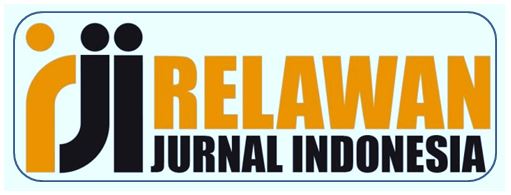The Role of Youth as Non-State Actors in Providing Clean Water and Adequate Sanitation in the Tebas River Based on Quadruple Helix
DOI:
https://doi.org/10.59110/aplikatif.v2i2.262Keywords:
Non-State, Quadruple Helix, Rivers Sanitation, VSGDs, YouthAbstract
For many years, the Tebas River has been the lifeblood of the community in Tebas Kuala Village and Tebas Sungai Village, Tebas District, Sambas Regency, West Kalimantan Province, Indonesia. However, as the population increases, industrial areas and technological developments affect the condition of the river water. Currently, the Tebas River water is starting to be polluted by waste from households and small industries with the presence of E. Coli bacteria due to the continued use of plunge toilets, which has the potential to cause diarrhea. This article aims to analyze the role of youth as non-state actors in providing clean water and adequate sanitation in the Tebas River. The method used in this article is descriptive qualitative with data obtained from observation and literature study. The research results found that stakeholder handling is needed through quadruple helix synergy, namely from government, society, industry, and academia. This management synergy also supports the achievement of the 2030 Village SDGs, especially in point 6, namely Clean Water and Sanitation. In conclusion, this initiative discusses protecting the Tebas River for both the present and the future generations.
References
Atima, W. (2015). BOD dan COD Sebagai Parameter Pencemaran Air dan Baku Mutu Air Limbah. Biosel: Biology Science and Education, 4(1), 83—93. https://jurnal.iainambon.ac.id/index.php/BS/article/ view/532.
Badan Pusat Statistik Kabupaten Sambas. (2021). Kecamatan Tebas dalam Angka 2021. Badan Pusat Statistik Kabupaten Sambas. https://sambaskab.bps. go.id/publication/2021/09/24/e9f372a6e871550afaebadd5/kecamatan- tebas-dalam-angka-2021.html.
DG, H. (2023). An Overview of David Easton and the Political System. International Journal of Political Science, 9(1). https://doi.org/10.20431/2454-9452.0901002
Harapan, E. (2019). Penggunaan Jamban Tradisional Pada Masyarakat Transisi Di Sumatera Selatan. Prosiding Seminar Nasional Pendidikan Program Pascasarjana Universitas PGRI Palembang. https://jurnal.univpgri-palembang.ac.id/index.php/Prosidingpps/article/view/2532.
Hasche, N., Höglund, L., & Linton, G. (2020). Quadruple Helix as A Network of Relationships: Creating Value Within A Swedish Regional Innovation System. Journal of Small Business & Entrepreneurship, 32(6), 523-544, https://www.tandfonline.com/doi/full/10.1080/08276331.2019.1643134.
Iskandar, A. H. (2020). SDGs Desa: Percepatan Pencapaian Tujuan Pembangunan Nasional Berkelanjutan. Jakarta: Yayasan Pustaka Obor Indonesia.
Kabir, A., Roy, S., Begum, K., Kabir, A. H., & Miah, M. S. (2021). Factors Influencing Sanitation and Hygiene Practices Among Students in A Public University in Bangladesh. PloS One, 16(9), e0257663. https://doi.org/10.1371/journal.pone.0257663
Mishra, B., Kumar, P., Saraswat, C., Chakraborty, S., & Gautam, A. (2021). Water Security in a Changing Environment: Concept, Challenges and Solutions. Water, 13(4). http://dx.doi.org/10.3390/w13040490
Nelson, S., Drabarek, D., Jenkins, A., Negin, J., & Abimbola, S. (2021). How Community Participation in Water and Sanitation Interventions Impacts Human Health, WASH Infrastructure and Service Longevity in Low-Income and Middle-Income Countries: A Realist Review. BMJ Open, 11(12), e053320. https://doi.org/10.1136/bmjopen-2021-053320
Purwanto, E. (2016). Metodologi Penelitian Kuantitatif. Yogyakarta: Pustaka Pelajar
Purwanto, W. (2019). Seperempat Desa Di Indonesia Terdampak Pencemaran Sungai. Loka Data. https://lokadata.id/artikel/seperempat-desa-di-indonesia-terdampak-pencemaran- sungai.
Sari, N. K. (2019). Penguatan Elemen Masyarakat Bantaran Sungai sebagai Upaya Perubahan Perilaku untuk Meningkatkan Kualitas Sungai Melalui Pilar Sanitasi dan Pengelolaan Lingkungan. Artikel Lingkungan TL ITERA, 12(1). https://tl.itera.ac.id.
SDGs Desa. (2020). SDGs Desa Nomor 6: Desa Layak Air Bersih dan Sanitasi. Kementerian Desa, Pembangunan Daerah Tertinggal, dan Transmigrasi Republik Indonsia. https://sdgsdesa.kemendesa.go.id/sdgs-desa-nomor-6-desa-layak-air-bersih-dan-sanitasi.
Wang, L., Zhang, L., Lv, J., Zhang, Y., & Ye, B. (2018). Public Awareness of Drinking Water Safety and Contamination Accidents: A Case Study in Hainan Province, China. Water, 10(4). http://dx.doi.org/10.3390/w10040446
Who.int. (2019). 1 in 3 People Globally Do Not Have Access To Safe Drinking Water – UNICEF, WHO. WHO. https://www.who.int/news/item/18-06-2019-1-in-3-people-globally-do-not-have-access-to-safe-drinking-water-unicef-who
Downloads
Published
How to Cite
Issue
Section
License
Copyright (c) 2023 Fuzy Firda Zhan, Fuza Firdaus Zhan

This work is licensed under a Creative Commons Attribution-ShareAlike 4.0 International License.














